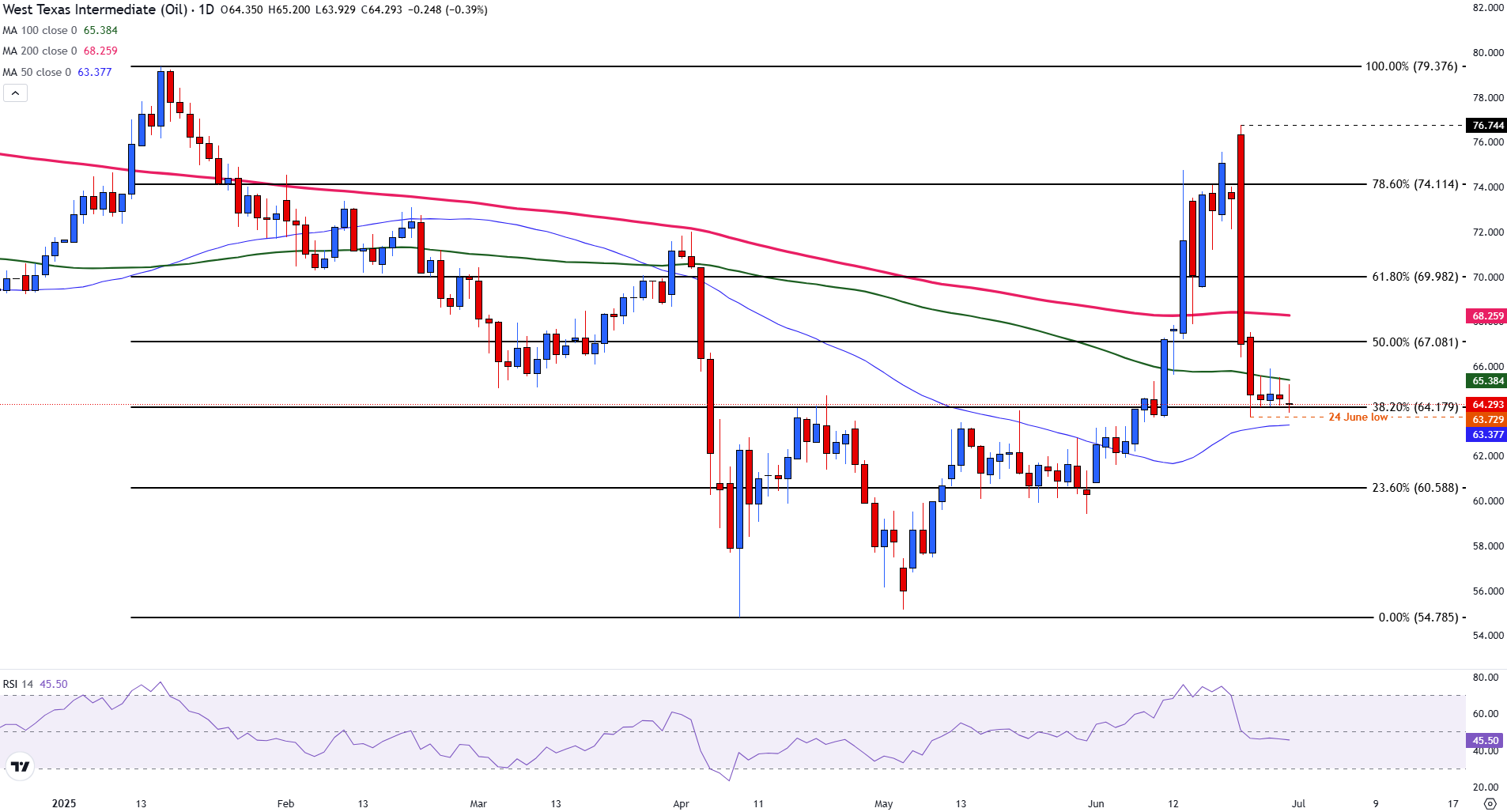WTI Crude Oil pares earlier gains as focus shifts from Prax insolvency to OPEC+ supply outlook
- WTI Crude Oil outlook turns bearish, trading below $65.00
- Prax refinery insolvency sparks a brief WTI boost due to regional fuel supply concerns.
- US Crude Oil remains vulnerable to demand and supply dynamics, with OPEC assisting in limiting gains.
West Texas Intermediate (WTI) continues to trade in a narrow range on Monday, with the US Crude Oil benchmark remaining below $65.00 per barrel at the time of writing.
One of the more unexpected developments on Monday came from the United Kingdom. Prax Group, an independent British energy company, was reportedly filed for insolvency.
The company owns and operates the Lindsey Oil Refinery, a key facility in northeast England which plays a notable role in regional fuel supply.
While the refinery predominantly processes Brent-linked crude, its potential shutdown or reduced output poses a risk to refined product availability across Northwest Europe, particularly diesel and gasoline.
Instead, market focus remained on supply-side expectations from the Organization of the Petroleum Exporting Countries and its allies (OPEC+).
The group is widely expected to approve another 411,000 barrels per day increase in crude production for August.
These additions would bring the cumulative increase for the year to approximately 1.8 million barrels per day. Key OPEC+ producers, including Saudi Arabia, Russia and the United Arab Emirates, are scheduled to meet via video conference on July 6 to finalize August quotas, with further production increases reportedly under discussion.
Also weighing on sentiment is the improving geopolitical landscape. A recently agreed ceasefire between Israel and Iran has eased fears of broader Middle East supply disruptions, effectively removing much of the earlier “geopolitical risk premium” that had been priced into oil markets earlier in the year.
WTI Crude Oil: Technical outlook remains bearish below $65.00
From a technical perspective, WTI has found support near the 38.2% Fibonacci retracement of the January–April decline at $64.18.
Immediate support now rests at the $64.00 psychological level, with a move lower opening the potential for a retest of the 50-day Simple Moving Average (SMA) at $63.35.
The inability to hold above the 100-day SMA, combined with recent tight-range candles, suggests consolidation near support rather than an immediate rebound. A break below the June 24 low of $63.73 could trigger further downside toward the 23.6% Fibonacci level at $60.59.
As long as supply concerns remain subdued, upside momentum appears limited, with the 100-day SMA providing short-term resistance around $65.45.
WTI Crude Oil daily chart

Above that sits the 50% retracement at $67.08, followed by the 200-day SMA at $68.29.
The Relative Strength Index (RSI) is currently tracking just below the neutral 50 mark, at 46, signaling a lack of strong bullish momentum.
WTI Oil FAQs
WTI Oil is a type of Crude Oil sold on international markets. The WTI stands for West Texas Intermediate, one of three major types including Brent and Dubai Crude. WTI is also referred to as “light” and “sweet” because of its relatively low gravity and sulfur content respectively. It is considered a high quality Oil that is easily refined. It is sourced in the United States and distributed via the Cushing hub, which is considered “The Pipeline Crossroads of the World”. It is a benchmark for the Oil market and WTI price is frequently quoted in the media.
Like all assets, supply and demand are the key drivers of WTI Oil price. As such, global growth can be a driver of increased demand and vice versa for weak global growth. Political instability, wars, and sanctions can disrupt supply and impact prices. The decisions of OPEC, a group of major Oil-producing countries, is another key driver of price. The value of the US Dollar influences the price of WTI Crude Oil, since Oil is predominantly traded in US Dollars, thus a weaker US Dollar can make Oil more affordable and vice versa.
The weekly Oil inventory reports published by the American Petroleum Institute (API) and the Energy Information Agency (EIA) impact the price of WTI Oil. Changes in inventories reflect fluctuating supply and demand. If the data shows a drop in inventories it can indicate increased demand, pushing up Oil price. Higher inventories can reflect increased supply, pushing down prices. API’s report is published every Tuesday and EIA’s the day after. Their results are usually similar, falling within 1% of each other 75% of the time. The EIA data is considered more reliable, since it is a government agency.
OPEC (Organization of the Petroleum Exporting Countries) is a group of 12 Oil-producing nations who collectively decide production quotas for member countries at twice-yearly meetings. Their decisions often impact WTI Oil prices. When OPEC decides to lower quotas, it can tighten supply, pushing up Oil prices. When OPEC increases production, it has the opposite effect. OPEC+ refers to an expanded group that includes ten extra non-OPEC members, the most notable of which is Russia.


